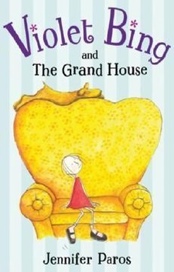Small Moves: The Natural Process of Things Coming Together
by Jennifer Paros
“When in doubt, just take the next small step.”
One Sunday I had things I could do, some things I should do, but nothing I particularly wanted to do. So, I decided to let whatever occurred to me lead the way. I looked around to see what might catch my attention and my eye landed on the cabinets above our washer and dryer in the mudroom. Upon seeing them, I felt my usual wave of disappointment and frustration. They’re packed with stuff: laundering supplies, yes, but also multiple baking pans, a casserole dish, Christmas tins and plastic containers, a large, red shirt box housing an assortment of odd kitchen items, old dishes, windshield wiper fluid, car oil, party supplies, an antique sewing machine, a boxed assortment of furniture cleaners, an extension cord, and so on.
Those shelves offended me. The grime on the shelves underneath the stuff offended me – as well as my not doing anything about it, which offended me most. And the cabinets doors were always open because they’re old and don’t close easily. Along with this judgment came feelings of confusion and being overwhelmed that kept me averse to the task. Yet, on this particular Sunday, led by my nose, I felt compelled to pick up the old plastic containers and recycle them. Then, in a strikingly logical maneuver, all laundering products were moved to the same shelf. I then recognized that the sub-category of Car Products could easily be collected and carted off to our shed. And so it was. Spaces were opening and ideas were coming. What had once seemed a challenging, impenetrable coagulation of garbage, now seemed amenable to organization.
My approach to making a picture is not dissimilar. I draw something, look at what I’ve got, and noodle – then I notice something else and an impulse comes to add or take away. My focus wanders, lands again, and another inclination comes. It may mean drawing patterns, an object, or a figure, or revising something already drawn. I begin with a sketch, but it’s just a place to start. In writing, the process is pretty much the same. There’s engagement and response, the feeling of things fitting or not. In the light of new movement, parts rearrange themselves or are eliminated. There’s a natural way things come together, and we can either work with it or against it.
“We cannot change anything until we accept it. Condemnation does not liberate, it oppresses.”
The way things change and come together is always the same: through small shifts in thought, small moves, lots of unknowns, and discovery. But when we stand before the task – cluttered shelves, writing project, health issue, relationship, or whatever – often we criticize ourselves for where we are and where we’ve been. This creates an internal battle that divides our attention and consumes our energy. When we reject the spot on which we now stand, we end up retreating, because the journey begins wherever we are and if we’re not okay with being here, we can’t start to go forward.
When my husband turned forty, I found him sitting on our bed with his head in his hands, despondent. He’d been waiting tables for twenty years, anticipating the day his career as a writer would take off and he could leave the restaurant. Though he’d written numerous books and one was published, he was full of self-condemnation, believing he was now trapped. I encouraged him to make one new move – anything – and see what happened. He signed up for a writing class and anxiously (and cynically) went. From there, his state of mind started relaxing enough for new ideas to arise. Over time, it led to volunteering at a writing organization, creating an online magazine, interviewing writers, a daily blog, publishing more books, speaking, teaching, and a coaching practice. As he allowed his thinking to reconfigure, his life followed suit. He stopped condemning where he was and joined with the natural process of how things come together.
Life actually works with us and for us when we engage with it in simple, open ways. We move; it moves – not only in terms of physical action but fundamentally through movement of thought. The more we’re engaged, the more information comes, the more clarity is gained. Often, we think that where we’re starting, where we are, is no good – that we’ve messed up and are stuck because of it. But where we are is always the perfect place to start. There is nothing wrong with where we are; it is a fine place to begin. And life will help us put things together as we go.
Jennifer Paros is a writer, illustrator, and author of Violet Bing and the Grand House (Viking, 2007). She lives in Seattle. Please visit her website.

